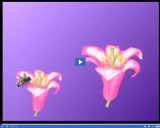
An animated depiction of a bee pollinating a plant
- Subject:
- Science
- Provider:
- Utah Education Network
- Author:
- Visual Learning Company
- Date Added:
- 02/28/2010

An animated depiction of a bee pollinating a plant
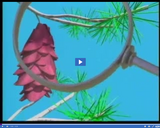
An animated depiction of gymnosperm reproduction

Students will research different types of plastics and their uses. They will also conduct several tests on the plastics to determine their physical properties.

Students will identify wind power as a source of energy and use the engineering process to determine construction of the blades, the housing unit and wind power enough volts to light one LED light bulb.

Students will learn about various careers related to energy. Students will learn about specific energy careers based on their interests.

This is a lesson plan created to help students learn how to retell the events of a story using first, next, then, and last using the story The Tiny Seed by Eric Carle. Students are also learning the life cycle of a seed.

This is a lesson plan created to help students learn how to retell the events of a story using first, next, then, and last using the story The Tiny Seed by Eric Carle. Students are also learning the life cycle of a seed.
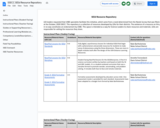
This repository is a collection of SEEd resources developed by Utah LEAs for their districts. The existence of a resource on this page in no way constitutes an endorsement by the Utah State Board of Education. This space is intended as a way for Science leaders to share resources and materials. LEAs are responsible for vetting the resources they share.

Students will identify photovoltaic solar power as a source of energy and explain what happens when a photovoltaic cell is shaded.
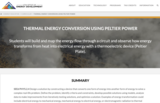
Students will build and map the energy flow through a circuit and observe how energy transforms from heat into electrical energy with a thermoelectric device (Peltier Plate).

Students will conduct an investigation to determine which insulators work best and compare materials. Students will design insulation that allows Utah’s waxy crude oil to remain as a liquid during transport.

Students will investigate to determine the optimum conditions for phase change, using water as a model for natural gas.

Students will look at maps of energy sources in Utah and compare it to the geography and population centers in Utah to explain where new sites should be proposed.
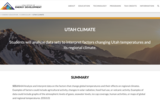
Students will analyze data sets to interpret factors changing Utah temperatures and its regional climate. They will also report on the comparison that they research and apply it to Utah.

Students will write an argument related to the per capita consumption of copper and its effect on the Earth’s systems.

This resource is a USGS lesson plan designed to help teachers utilize the "Where is the Water" posters and images from the Modern Water Cycle collection by BYU. The resources emphasize the two-way connection between humans and water and examines the water cycle in various environments: desert, forest, urban, suburban, coastal, and agricultural.

Students will develop a model of combustion showing that mass does not change in the process.
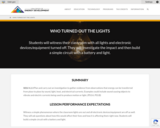
Students will witness their classroom with all lights and electronic devices/equipment turned off. They will investigate the impact and then build a simple circuit with a battery and light.